
The foreign eye: How international artists have seen India
International artists have made India their muse for centuries now, and their views of the country can be divisive as well as assimilative
When they first started coming to India in the 18th century, European artists weren’t prepared for what the country had to offer—neither its rigours nor the extremely lucrative commissions that made them wealthy beyond belief (though payments from royal families did not always come on time and sometimes required a nudge from British officials to materialise).
No matter how long they toured or stayed in India, its impact on their work was obvious. Initially, artists painted only her landscapes and people in the realistic style; later, influenced by local traditions, what emerged was the Company School, and attempts to merge rather than diverge. Lithographs and aquatints of the country were all the rage, but soon Indian artists from the art schools in Bombay and Calcutta began to paint just as well as their Western counterparts for far less remuneration, rendering them, as it were, obsolete. Still, artists have continued to come to work or settle in India, and their engagement has grown to include the native narrative in what still remains an occidental perception of a many-layered land.
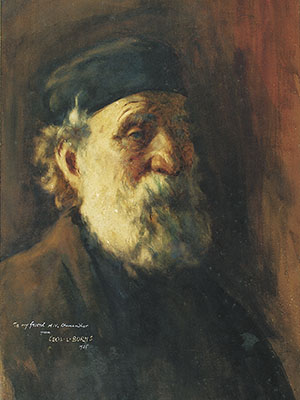
(c. 1863-1929)
Untitled, 1925
Cecil Burns’s influence on indian art has been greater than what many artists in the country realise. As art teacher as well as head of the Sir JJ School of Art in Bombay (now Mumbai) in the early twentieth century, he was responsible for its strict adherence to the tenets of British realistic art, a tradition that continues till today. Unlike in Calcutta (now Kolkata) where EB Havell replaced strictly academic training with traditional and classical Indian art, Bombay remained the vanguard of European art practice rooted in naturalism. Along with oil painting, Burns was also responsible for introducing drawing classes and a school of architecture. A dedicated teacher, he enjoyed painting landscapes, choosing those around Thane as his plein-air classroom. Among his students was MV Dhurandhar, one of the greatest artists of his time and a rival to Raja Ravi Varma in his success in establishing mythology and history within the prescripts of Victorian realistic art. Unfortunately, most of Burns’s body of work painted in India was lost in a fire on the Bombay dock on his return journey home to Southampton, England.
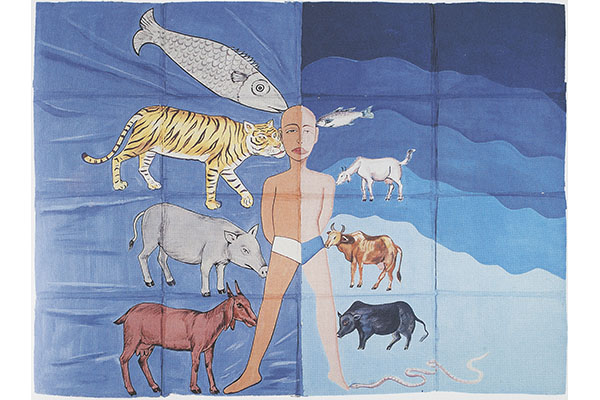
(b. 1952)
Boy, 1985
An italian artist who was born in naples, Francesco Clemente’s unusual journey is a tale of two cities—New York and Varanasi in the 1980s—and an enduring interest in the Indian subcontinent with his series of tantra-inspired work in Tibet and subsequently in India. Described as ‘nomadic’, Clemente’s work cannot be slotted into any easy category. Briefly described as neo-expressionistic, he collaborated with folk artists and craftsmen in India, breaking the shackles that confined them to a less elitist platform. He has worked across genres and mediums, choosing oil, water colours, printmaking, pastels and photography at different times or together before finally settling on painting as his abiding interest. Sometimes erotic, at other times transformative and fragmentative, he is an unwitting commentator on the digital (and materialistic) age through which his work has informed Indian artists. Shown at prestigious museums in Philadelphia, Paris and Tokyo, his paintings have also been featured at the Guggenheim Museum in Bilbao, Spain, as well as at the Kochi-Muziris Biennale in Kochi, Kerala. His Inspired by India exhibition ran from September 2014 to February 2015 at Queen’s Museum in New York and has opened a window to Indian art practice from traditional times to its contemporary renderings.
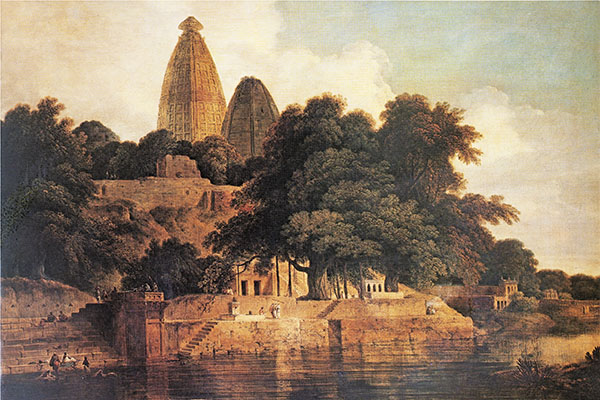
(1769-1837)
Hindu Temples at Brindaban, 1797
William Daniell, accompanied by thomas Daniell (1749-1840), his uncle and an alumnus of the Royal Academy of London, came to India at the behest of the East India Company towards the end of the eighteenth century. Having previously exhibited in London, their reputation was established in the subcontinent as they travelled for 10 years, documenting this land’s flora and fauna, her landscapes and forests, ruins and architecture and occasionally its people. As realistic painters, they developed a formidable reputation and received a large number of commissions, chiefly from Company officials, and also from Anglophile royal families who opted for their glamorous oil on canvas paintings over classical miniatures. While a large selection of their paintings was turned, upon their return to England, into engravings and aquatints, which they published over six volumes under the title Oriental Scenery, a substantial number of them can be seen at Victoria Memorial in Kolkata. Almost more than any other artist, William and Thomas Daniell contributed to the romantic colonial imagination of India, and their landscapes have the power to quicken the pulse at the thought of this exotic land and its lifestyle that swung, in European thinking, between the sophisticated and the heathen.
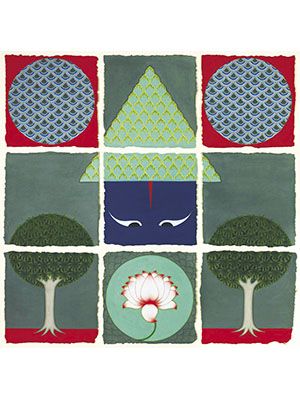
Olivia Fraser (b. 1965)
Mt Govardhan, 2010-2011
Blame it on her genes, but olivia fraser was drawn to India the same way that an ancestor, James Baillie Fraser, had been, to paint its people and architecture against their native landscape. While James did precisely that (though he also commissioned other artists to paint for his anthropological work, Fraser Album), Olivia could easily pass off as a Company painter from that era for her eclectic style that combines Indian miniature and folk art with British realism, which resulted in a morphed style that had become fashionable in the cantonments. A student of modern languages, she has learnt the techniques of miniature art from its masters. She has been drawn to the Nathdwara Pichwai school and her latest body of work has drawn its inspiration from it even though it marked a change in her journey as a chronicler (alongside her writer husband, William Dalrymple) of India’s infinite tales. Moving away from actual watercolour landscapes and people’s portraits, her work is now rendered in the abstract as she grapples to deal with India’s complex layers of spirituality in a manner that is essentially simple, while at the same time evangelical.
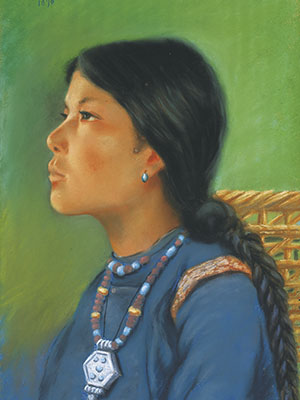
Olinto Ghilardi (1848-1930)
Untitled, 1890s
For almost two decades, Olinto Ghilardi, an Italian artist, ceased to exist in his native land as he disappeared East. His domicile during this period was Calcutta where, in 1886, he began to teach art at the Government School of Art, which had laid the foundations of European art practice in India. From there, he wielded considerable influence over India’s emerging notions and understanding of Western art, though it was as Abanindranath Tagore’s mentor that he has been best known.
In so doing, he shaped the course of the Bengal School of Art, even though its inspiration has been considered by many to be Japanese rather than European for its watercolour wash technique. Interestingly, while here, instead of adhering to the British notion of academic art, his use of gouache and pastel (used by many Bengal artists) helped him establish the Indian Association for the Promotion of Fine Arts, under the aegis of which art students were sent to study in Italy instead of England. Ghilardi returned to Italy in 1905 where he continued to paint Indian themes as a result of his stay here, and joined the Gruppo Labronico, a platform for important avant-garde artists, in 1911, thus identifying himself with emerging expressions that would influence European art in the early twentieth century.
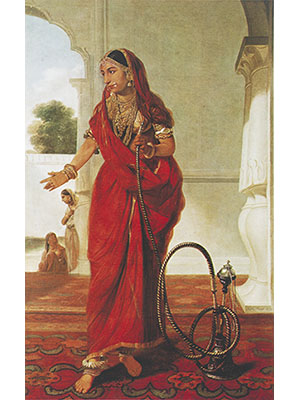
Tilly Kettle (1735-86)
Dancing Girl, 1772
In the eight years that he spent touring India, from 1768-76, Tilly Kettle, unlike other British artists, chose to ignore the landscape for the streetscape. A portraitist, his first port of call was Madras (now Chennai), where he painted the Nawab of Arcot as well as British luminaries, before moving to Calcutta, the capital of the East India Company, which had invited him to tour India. Here, he painted his well-known scenes of nautch-girls as well as sati. He also travelled to Lucknow to paint the Nawab of Awadh. Born in London, he began painting in the 1750s, though his professional portraits began appearing from 1760 onwards. Unlike the Daniells, who preferred to paint landscapes, Tilly Kettle found himself drawn to the stories and people of India, and the street claimed his attention when he was not making portraits of the elite. On his return to London, his marriage to Mary Paine led him to his financial clemency, especially since he seemed to have lost his former patrons in England. Nostalgic for his fame and success in India, he attempted to return in 1786 using an overland route, but presumably died somewhere en route as he was not seen again.
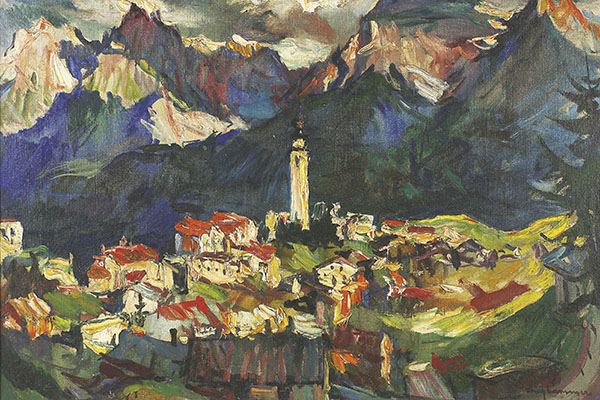
Walter Langhammer (1905-77)
Untitled (Swiss Landscape)
An inadvertent consequence of Adolf Hitler’s Nazi goons was the flight to India of Jews or their sympathisers, some of whom became part of India’s art scene in the 1940s. Among them was the Austrian, Walter Langhammer, whose flight took him to Shanghai and Bombay, the latter becoming his home when he joined The Times of India as its art director. Bombay’s Art Society at the time suffered from great ennui even as it wielded a powerful influence over the norms that guided artists. Langhammer became the Society’s chairman in 1938, and was a committee member during its diamond jubilee celebrations in 1952-53. In the interim, along with refugees Rudy von Leyden and E Schlesinger, he encouraged the Progressive Artists’ Group founded, in 1947, by FN Souza. The trio supported their efforts, and Langhammer painted from memory Alpine landscapes as well as Indian themes, the latter mostly for the annual issues of The Illustrated Weekly of India. Along with Kekoo Gandhi, he designed frames for paintings at the fledgling Chemould Frames (later Gallery Chemould), and was friends with scientist Homi Bhabha, art critic Mulk Raj Anand and curator Hermann Goetz, who collectively promoted post-colonial Indian art.
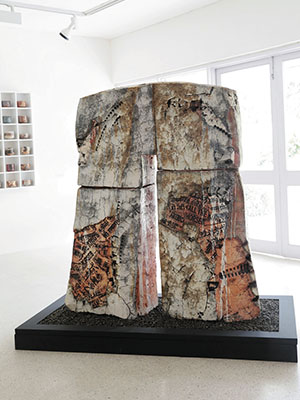
Ray Meeker (b. 1944)
Eye of the Needle, 2014
an outstanding example of a ceramicist, Ray Meeker came to India’s Pondicherry in 1970 where, with Deborah Smith, he set up a kiln to launch Golden Bridge Pottery in 1971. Till then, ceramic pottery practice had been extremely limited —other than traditional potters, there was Delhi’s Blue Pottery—and it continues to struggle to be recognised as an art form despite a number of artists practicing in the medium. Meeker studied ceramics in California, Smith had apprenticed in Japan, and now they were introducing the concept of glazed stoneware pottery by hand in India. While Smith handled the production, Meeker was more experimental, even making fire-stabilised mud houses. He taught local apprentices, resulting in a number of kilns and pottery workshops in the neighbourhood. Meeker has always seen himself as a mentor but has remained at heart an artist, often experimenting with both form and texture as his students or associates continue to stretch themselves in the discovery of ceramic fine art.
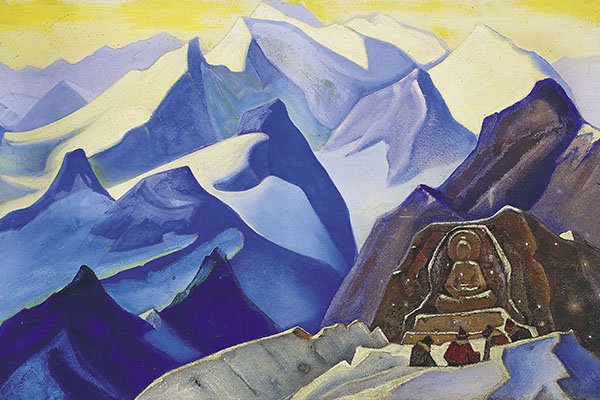
Holy Refuge, 1933
So well regarded is Russian artist Nicholas Roerich in India that Prime Minister Jawaharlal Nehru’s government extended him the status of one of nine ‘national treasure’ artists —the only foreigner in the group, even though Roerich did spend 19 years in India, making a home in Naggar (on the Kullu-Manali highway). His deep interest in Indian religion led him to study Vedantist essays by Ramakrishna and Vivekananda, Rabindranath Tagore’s poetry and sacred Hindu and Buddhist texts. After brief stays in London and New York (where there is a Roerich Museum), Roerich came to India and made his home in the Himalayas from where he undertook expeditions across the Karakorams to Mongolia, Central Gobi, Siberia and Moscow (attracting the attention of intelligence agents from UK, USA, USSR and Japan). His Indian body of work largely concentrates on Himalayan landscapes with a spiritual slant, though his oeuvre has included figuration and narratives elsewhere. Roerich’s magnificent views are rare collectibles, and continue to be in demand. His son, Svetoslav, who was also an artist, married Bollywood actress Devika Rani and made his home in Bengaluru.
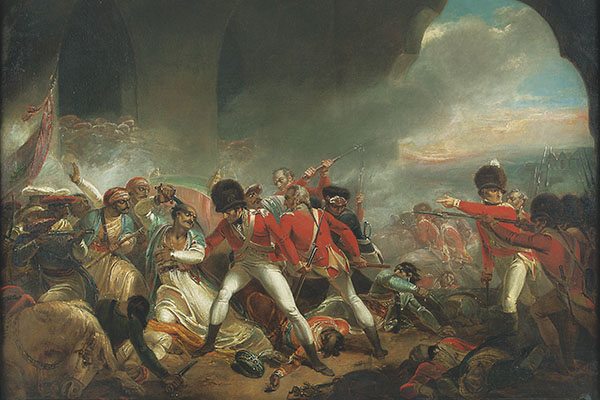
The Last Effort and Fall of Tippoo Sultan, early 19th century
a very significant british artist known for his large compositions from the Bible, Shakespearean theatre or contemporary historical events such as the pictured work alongside, Henry Singleton was a silver medallist from the Royal Academy schools and was commissioned by it to paint a group portrait of forty academicians. He also exhibited regularly there from 1784 till his death, but was ironically never invited to be a member of the Academy. He was in demand as a portrait painter, but it is his theatrical scenes of historical cusps that are considered the most important. In them, he captures the intensity of the moment as well as movement, and despite being a British vanguard, does not show the vanquished—the Indian army of Tipu Sultan in this case—to be either evil or weak, but as an able opponent. There is an inherent nobility in his narrative, even though the results are nothing but death and devastation. The grand sweep of the historical chronicle provides a subject, but the style is not melodramatic; it is heroic—and therefore tragic. The rendition of uniforms and costumes and the nature of warfare mark him out as a painter suited to his other passion—the painting of dramatic productions.
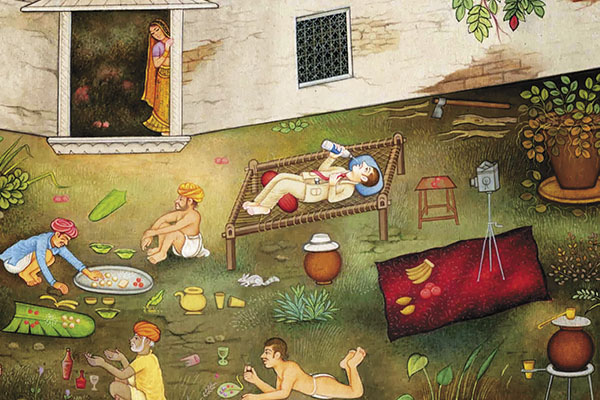
Jali, 2013
Richard John Waswo, known by his nom de plume of Waswo X Waswo, was born in Wisconsin, USA, where he also studied before making a home in India since 2001. A master of chemical process sepia-tinted photographs, that has formed part of India’s engagement with the Western eye (and, therefore, debates about exoticisation), Waswo came into his own as an artist who paints miniatures. In his photographs, there is a considered attempt to create an India image that is deliberately recreated, using artistic licence. Besides his sepia studies, he hand-tinted photographs in a tradition in prevalence till the early decades of the twentieth century. But having chosen to live and work out of Udaipur, Rajasthan, Waswo soon moved to painting in the miniature style, initially with R Vijay, and eventually on his own. The miniatures are interesting for their humour, using a male, often American, subject. Whether the American showers money, a la Lakshmi, the goddess of wealth, or pulls on his hookah, or makes love in a pleasure bower, Waswo inverts predictability, adding a salacious touch with gay lovers and nudes that can startle for being unexpected and provocative.
(This story appears in the Nov-Dec 2015 issue of ForbesLife India. To visit our Archives, click here.)
-
 Dips Sherman
Dips ShermanThank you, very informative!!
on Nov 24, 2015














